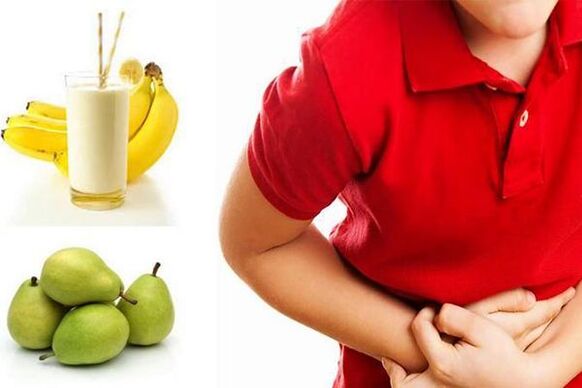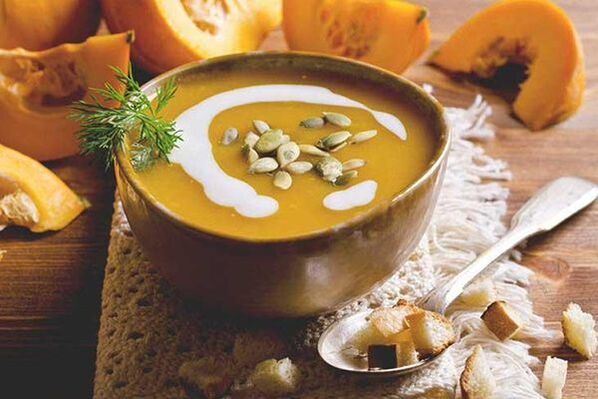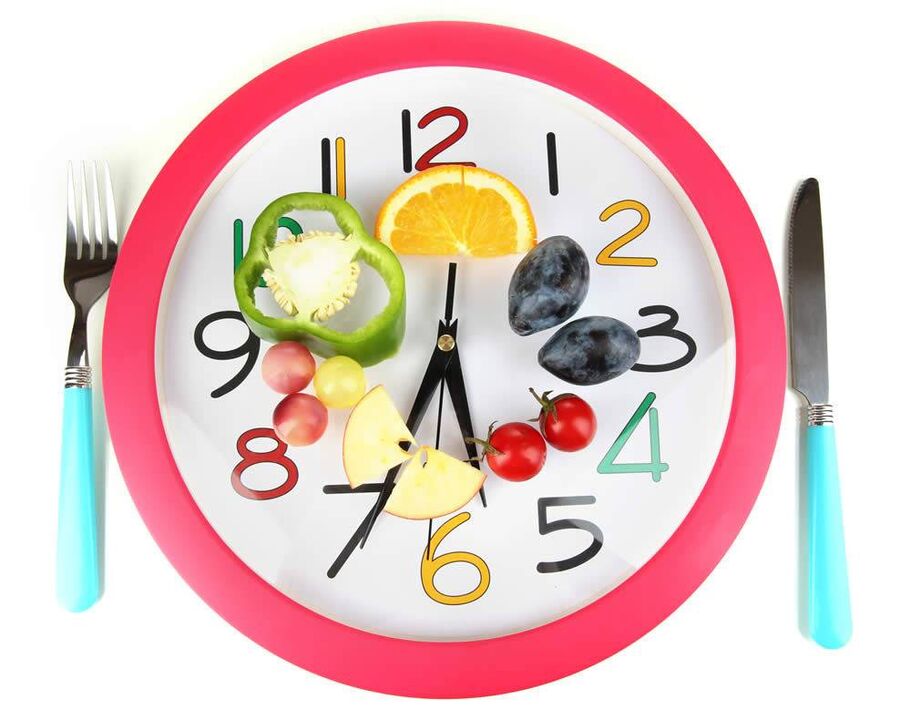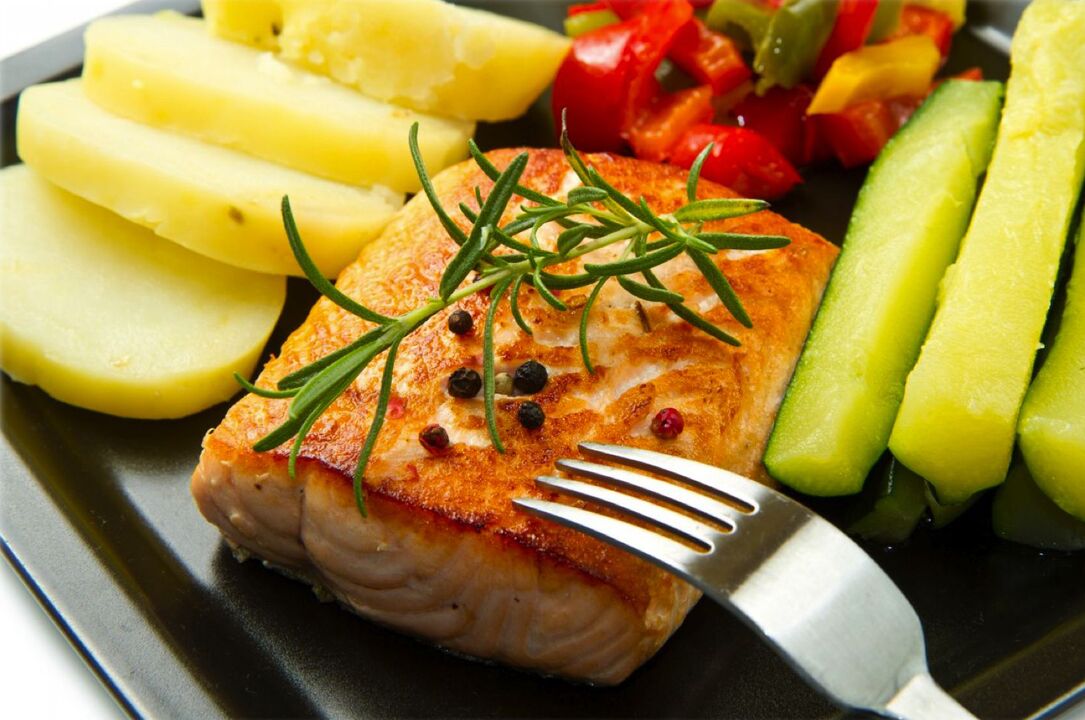Gastritis is the name given to inflammatory processes in the gastric mucosa, which inevitably lead to digestive problems. A person begins to digest food poorly, as a result of which his health deteriorates and weakness and lethargy appear. According to statistics, about half of the residents of our country experience painful symptoms of gastritis to one degree or another.
Diet for gastritis

Many people wonder: what diet should people with gastritis follow? This is a very important question, because proper nutrition is an important part of the treatment of diseases of the gastrointestinal tract. If you have gastritis, you should always follow a light diet. If your health improves, you can only gradually return to your normal eating habits. In some cases, doctors prescribe individual diets for gastritis.
It is also important to remember that with gastritis, enzyme deficiency develops, so in some cases, along with a diet to improve digestion, enzyme preparations such as Micrazim should be used.
There are two types of gastritis: acute and chronic. In different people, these forms can be accompanied by high and low levels of stomach acid. Acute gastritis has the following types:
- fibrinous (exacerbates the occurrence of infectious diseases);
- catarrhal (accompanied by a violation of the integrity of the outer lining of the stomach);
- phlegm (causes purulent inflammatory process on the stomach wall);
- Corrosion (one of the side effects of poisoning).
In contrast, chronic diseases have the following forms:
- superficial;
- hypertrophy;
- Polyposis;
- bacteria;
- granuloma;
- autoimmune.
Another form of chronic gastritis is common in people whose stomach walls have been damaged by systematically drinking large quantities of alcohol.
The main principles of diet for gastritis
Remember that a proper diet for gastritis is the key to successfully overcoming symptoms. If the acidity of gastric juice increases, then you need to eat foods that help reduce its activity. Follow three rules:
- Mechanical principles. Avoid foods containing crude fiber. These products include onions, ribbed meat and bran. In addition, dishes cooked in oil are strictly prohibited.
- Chemical principles. Avoid foods that can increase gastric secretions. The list includes alcohol, carbonated water, citrus fruits (including juices from them), coffee, black bread, cabbage and rich meat broths.
- Thermal principles. Do not eat foods with very high or very low temperatures. They irritate the esophagus, cold foods, among other things, stay in the stomach longer than usual.
What foods can you eat if you have gastritis?

Include lean meat (such as rabbit) in your diet. Duck, lamb and goose are not allowed, but only skinless chicken can be eaten.
Other acceptable foods and dishes include:
- river fish;
- Seafood;
- egg white omelet;
- oatmeal and buckwheat porridge;
- milk;
- zucchini, pumpkin, tomatoes, carrots, various green vegetables;
- berries have a high sugar content;
- Boiled and pureed fruit.
What should be missing in the diet?
If you have been diagnosed with gastritis caused by Helicobacter pylori bacteria, you should not apply a diet to yourself. Be sure to consult with a gastroenterologist or nutritionist for consistent and effective gastritis treatment.
With this disease, the menu should not include:
- Fresh baked goods, especially rye bread, as well as pastries. Instead, you're better off eating white bread, simple cookies, and pies.
- Soups with rich broths, including mushroom soup, cabbage soup, and borscht soup. Such dishes should be replaced with light vegetable soups with potatoes, cabbage, carrots and onions.
- Smoked dishes, as well as fatty and sinewy meats. Instead, it is better to eat dishes made from boiled or steamed meat (cutlets, meatballs). The allowed meats are chicken and lamb.
- Hard-boiled eggs and fried omelets. They should be replaced with soft-boiled eggs and steamed omelets.
- Any salty dishes and spices, sauces, chocolate, carbonated drinks, coffee and kvass.
- Wine.
Diet for people with high acidity
With this form of gastritis, you should not overuse fruits and vegetables because they can make your health worse. However, you should not completely eliminate these products from the menu. Avoid foods that can stimulate stomach acid production and choose acid-reducing foods. By eating right, you are more likely to lose weight than gain it. Below is a table showing allowed and prohibited products:
| Vegetables: carrots, pumpkin, potatoes, beets. Light vegetable salad. Tomatoes: ripe, chopped. Cucumbers do not have skin. | Green trees. |
| Fruit: not sour, ripe, without skin (bananas, pears, apples). It is best to eat fruit not raw but grilled. Watermelon and melon - in very limited quantities. | French fries, pickles, sauerkraut. |
| Milk (from cow or goat), cream, yogurt. Fresh cheese. | Sour cream, kefir, hard cheese. |
| Soup with broth for dieters. | Cabbage and borscht soup in rich broth. |
| Pasta | pea's tree |
| Boiled chicken or rabbit meat, lean river fish. | Smoked meat, fish and high-fat meats, canned foods. |
| Oatmeal and buckwheat | Drying fruits |
| Soft boiled eggs. | Chocolate |
| Crackers, white bread (old for a few days), dry crackers. | Hard-boiled eggs, fried omelets. |
| Weak tea and coffee, cocoa with milk added. | Rye and freshly baked bread. Cakes and candies with cream filling. |
Low acid diet
In such conditions, you need to eat differently than in the previous case. You need to eat foods that promote gastric secretion. The table below lists suitable foods for remission. If you have severe stomach pain, you need to eliminate foods that irritate stomach tissue from your menu.
Vegetables: baked potatoes, tomatoes, greens, carrots, beets, pumpkin, pickles.
Diet for gastritis - general recommendations

Gastritis patients should exclude spices used in cooking from the menu. You can improve the taste of the dish with fresh herbs (parsley, dill, celery). Green vegetables will also help add vitamins to your diet: try to season many of the dishes you eat with chopped greens.
You need to eat many small meals but avoid snacking; This way the stomach will not have difficulty digesting food. Chew food thoroughly and eat slowly. Eating in a hurry can make your health worse and aggravate gastritis. Chew your food until it turns into an easily digestible mush.
Do not forget that proper and balanced nutrition is the key to treating gastritis. Many patients who followed a strict diet during treatment reported that it helped them successfully overcome all the symptoms and pain associated with the disease within 4 weeks.
Important: before use, read the instructions or consult your doctor.
What should you eat if you have gastritis?
Every day, statistics about gastritis and stomach ulcers in children and adults are increasing. This also applies to other inflammatory diseases of the digestive tract. Patients often suffer from pain, affecting their quality of life. It is necessary to promptly contact a gastroenterologist for a comprehensive diagnosis and to determine the origin of the injury. If treated adequately and promptly, the risk of complications will be reduced. It is important not only to take medication but also to develop a suitable diet under the supervision of a doctor and nutritionist. This is the basis for prevention and treatment.

Characteristics of gastritis
Gastritis is a chronic inflammation of the stomach lining, leading to pain, loss of appetite, and other symptoms. Of all gastrointestinal diseases, most patients suffer from this disease.
Many people underestimate the importance of timely diagnosis of gastritis and consider this a minor aberration that does not require treatment. They believe that the disease will not cause any harm and will gradually go away on its own, without needing treatment. But if treatment and diet are not applied promptly, the disease can gradually develop into duodenal ulcers and malignant transformation.

Root factors
Many studies have been conducted and statistical data collected, according to which the basis for the development of gastritis is Helicobacter pylori. This is a type of bacteria that attacks the walls of the stomach and duodenum. Most people are just carriers of bacteria, but under the influence of negative factors, it begins to actively multiply, causing disease. Long-term Helicobacter pylori can lead to the development of atypical cells of the mucous membrane, causing malignant degeneration.
Doctors have identified the main harmful factors that can cause gastritis:
- Eat poor quality food. It includes fatty, fried, spicy, smoked and overly salty foods. This type of food has a strong impact on the stomach wall, causing inflammation. As a result of damage, Helicobacter pylori begins to multiply actively.
- Kurenie) Nicotine and dust from smoking spread into the respiratory tract and digestive system. It negatively affects mucous membranes, causing irritation and increased inflammation.
- Drink large amounts of alcohol. This has a toxic effect on any tissue of the body, including the gastrointestinal tract. It leads to the appearance or intensification of inflammation.
- Emphasize. Great physical and mental stress. These factors cause the active production of cortisol. It leads to increased release of hydrochloric acid. If it acts on the stomach wall without a certain amount of food, damage will occur.
If the patient is affected by many factors simultaneously, the disease will develop faster.
Clinical signs
In the early stages, patients and doctors may not notice visual signs. The more damage that occurs, the more actively the inflammatory process develops.So, over time, the following symptoms appear:
- epigastric pain, aggravated by stress, eating, hunger;
- Nausea and vomiting occur regardless of the amount of food eaten;
- constipation, diarrhea.
There are signs that can be used to determine whether a patient has a digestive disease or not.If a person has more than 4 symptoms, a gastroenterologist should be contacted:
- epigastric pain often occurs;
- painful point in the middle of the abdomen;
- heartburn;
- frequent belching;
- constipation, diarrhea;
- occasional nausea;
- vomiting for no reason;
- the presence of any digestive diseases in relatives;
- the presence of bad habits (smoking, frequent drinking, overeating);
- Periodically apply a strict diet.

The diagnosis cannot be determined independently because symptoms may appear during temporary disorders or other acute or chronic diseases. It is important to be examined and diagnosed by a doctor, who will prescribe conservative or radical treatment, depending on the developing lesion.
Diet
Diet prescribed by 2 doctors:
- gastroenterologist;
- nutritionist.
It would be better if these doctors worked together to provide quality treatment.But they must first undergo an examination and diagnostic tests to determine the following factors:
- degree of damage to the mucous membrane;
- the degree of spread of damage to different parts of the digestive tract;
- reason for failure.
After collecting complete information, a nutritional regimen will be developed. This is one of the basic treatments that help reduce the burden on the digestive tract.There are 2 diets for the development of gastritis:
- has high acidity;
- with low acidity.

Regardless of the diet chosen, your gastroenterologist should remind you of the basic principles of a proper diet when sick.
- Farewell. The total volume of product that the patient should consume in 1 day is determined. It is divided into 6 parts, evenly distributed throughout the day. That means the patient must eat every 3 hours. You should not overeat or starve because these factors negatively affect the condition of the stomach. One serving is approximately the size of two palms.
- Chew. Consumed food begins to be digested in the oral cavity under the influence of saliva containing enzymes. Therefore, it is important to chew each mouthful for a long time.
- Rest after eating. You need to sit and lie down for 30 minutes so that the digestive process begins without problems.
- Temperature. If there is a suspicion of an inflammatory process, eat warm food. It should not be too hot or cold.
- Water mode. Drink at least 2 liters of water per day to maintain a stable water-electrolyte balance and prevent dehydration from developing. Drink water little by little throughout the day.
- Required protein intake. Protein is the basis for building the body. Thanks to them, damaged tissues will recover faster after gastritis.
- It is forbidden to eat food that is too rough. It should not contain fragments that can damage the affected structures of the mucous membrane.
- Cook properly. It is boiled, steamed, grilled. Frying or smoking is prohibited.
- Drinking alcohol is prohibited, caffeine, energy drinks, soda.
- Maintains vitamin levels. If they are normal, metabolism and metabolic processes improve, the nervous system and gastrointestinal tract are strengthened. If there are not enough nutrients, multivitamin preparations are used.
Application of these rules will reduce the load on the stomach during treatment.
Fruits have high acidity
Gastritis accompanied by normal or high acidity requires special nutrition. It is necessary to monitor the temperature of food: do not eat food with a temperature above 40-50 ⁰C. Fruit can be consumed pureed, steamed, boiled, baked or stewed, or in purees, mousses, jellies, jellies or jams. It is not recommended to consume fruits with a high content of organic acids (pomegranate, citrus fruits, fresh apricots), unripe or sour fruits. During exacerbation, all fruits should be used only in pureed form. The remaining time it is better to use:
- sweet apples;
- avocado.
Fruits have low acidity
For the opposite form of gastritis, when acidity decreases, doctors recommend other fruits:
- Citrus fruits - prevent the formation of malignant cells, maintain normal acidity;
- Pomegranate and its juice help restore the gastric mucosa;
- Peaches - promote the production of gastric juice, but they can only be eaten by patients who are not allergic to fruit.
Attention! With any gastrointestinal pathology, it is important not to overload the stomach and adhere to the diet prescribed by the doctor.
Diet for highly acidic gastritis
If the patient develops this type of gastritis, the following processes will be formed:
- excessive production of hydrochloric acid;
- increases the acidity of hydrochloric acid.
Normally, hydrochloric acid is intended to break down the contents of the stomach. But it must be within certain limits so as not to damage the body's tissues.If its pH increases, irritation of the gastric wall begins, which will lead to the next stages:
- inflammation;
- erode;
- ulcers;
- perforation.
Gastritis can develop at different ages. Prolonged exposure to harmful factors is enough for the inflammatory process to develop. If the acidity of gastric juice increases, you need to follow a certain diet to reduce these indicators.
Attention! Many patients know that taking antacids reduces the acidity of gastric juice. However, arbitrarily using these drugs is prohibited. They have contraindications and side effects.
When applying a diet, it is important to follow certain rules for success to occur.
- Avoid foods that cause or worsen damage to the stomach wall. This is a food containing fiber and solid elements. For example, cereals, dumplings, bran, and meat fibers. All food should be as light as possible and easily digestible.
- Refuse any foods and drinks that increase the acidity of hydrochloric acid. For example, citrus fruits, canned goods, coffee, alcohol, soda.
- Eat food at a warm temperature. Do not drink boiling water, hot liquids or food. Cold food is also not accepted. The optimal limit is 25-35 degrees.
If the patient's gastritis worsens and causes unbearable pain, it is necessary to immediately begin a strict diet. This will help significantly reduce the inflammatory process and allow tissues to recover. On the 3rd day, one will feel relief. But this is possible only with the additional use of drugs prescribed by a doctor.
When prescribing a strict diet, the following foods and dishes are recommended:
- low-fat chicken or vegetable broth with crackers, which can be replaced with soft porridge (for example, oatmeal);
- pasta soup with milk (hard pasta is allowed);
- boiled young potatoes without cream or salt;
- milk has a reduced fat content so as not to increase the load on the digestive tract due to the presence of high lactose concentrations.
If there is exacerbation and acute pain, each product is added gradually, in small portions. This will help the digestive tract get used to it and not cause negative reactions. But if a food causes more nausea or pain, it's better to replace it with another food.
As soon as the acute phase passes, the diet is resumed.It is expanded with the following product categories and dishes:
- Boiled, grilled eggs contain high protein content (yolks can be removed to limit fat);
- Lean meat of chicken, rabbit, beef, can be grilled, boiled, steamed (remove the skin before cooking);
- Fish and seafood contain large amounts of omega-3, which has good effects on the digestive tract and nervous system;
- milk needs to be boiled first;
- soups with added cereals (any cereals are allowed except semolina);
- Seasonal store-bought vegetables;
- Fruit should be eaten between main meals so as not to put stress on the digestive tract but not to leave the stomach empty;
- quality sausage;
- olive oil, sunflower;
- dumplings and similar products prepared at home from natural minced meat and a thin layer of dough;
- internal organs, among which the liver has the most positive effect because it contains a large amount of trace elements and vitamins;
- soft cheese;
- honey, weak tea, decoction, dried fruit juice.
The following types of products are required to be restricted:
- Baked products, muffins, fresh cakes;
- chocolate;
- milk product.
All of these foods increase stomach acid. Carbohydrates negatively impact any part of the digestive tract, causing strong acidity, which is a favorable environment for Helicobacter pylori bacteria to multiply. In addition, they refuse to chew gum because during use hydrochloric acid is actively produced. If used too much, acid gastritis will become worse. This can lead to the formation of erosions and ulcers.
Diet for gastritis with low acidity
With this type of gastritis process, the concentration and acidity of hydrochloric acid will decrease. Therefore, food is poorly digested, large pieces of food enter the intestines, leading to a burden on the intestines. This negatively affects the entire state of the digestive tract. Most often, people aged 40 years and older suffer from such gastritis.
If the disease is not treated promptly and a diet is not applied, the following complications will arise:
- atrophy of the gastric mucosa;
- thinning of tissues;
- reduced parietal cell function.
Gastritis with low acidity is one of the most dangerous and difficult to treat diseases. Therefore, it is important to start treatment at an early stage, before precancerous conditions develop.
To overcome the disease, you need to consume foods that stimulate the production of hydrochloric acid in the stomach. You also need to increase its acidity so that food is processed quickly.
Attention! It is necessary to simultaneously increase acidity and not cause stress to the digestive tract. Therefore, do not eat fatty, spicy, fried, smoked foods, fast food, alcohol, regardless of whether they increase acidity.
In case of illness, gastroenterologists advise to adhere to certain nutritional principles:
- Before eating, drink 200 ml of lightly carbonated mineral water;
- Chew food thoroughly, eat each bite gradually, the entire meal takes at least 30 minutes;
- Between meals, you should eat fruit to increase the acidity. You can grill it in advance to not cause stress.
With the development of acid-reducing gastritis, it is necessary to consume the following foods or dishes:
- lean meats - chicken, turkey, rabbit, young veal;
- any fruits and vegetables that do not have a coarse fibrous structure (citrus fruits, white cabbage and cauliflower are recommended);
- vegetable and meat broth;
- small amounts of carbohydrates in the form of sweets and baked goods;
- any type of fermented milk product;
- canned food;
- herbal decoctions, teas, berry and fruit juices.
Since milk in any form reduces the acidity of gastric juice, it is not allowed to consume milk when preparing a diet.
Gastritis is one of the most common digestive problems in the population. The disease can affect patients of all ages. It can be prevented if you use preventive rules. But if the pathology has developed, it is important to get a timely diagnosis and begin treatment to prevent complications from developing. This therapy is based on a reasonable and high-quality diet, improving lifestyle and avoiding bad habits. The diet is selected individually for each patient, depending on the degree of damage and acidity of gastric juice.














































































